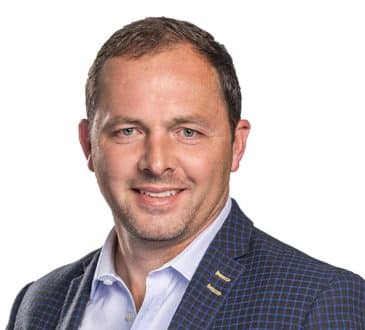India’s Future Prosperity Paves the Way for Global Challenges

On August 15, 2022, Indian Prime Minister Narendra Modi pledged during the 75th anniversary of Independence Day to make India a developed country in 25 years. This has drawn attention worldwide, and there are concerns about what kind of developed country India will become in the 25-year timeframe envisioned by Modi and how they will adapt their diplomatic strategies to address such changes.
India’s potential for wealth and prosperity is promising, but its long-term sustainability and stability remain uncertain. Additionally, India may pose a new set of challenges for the global community.
Amidst the global economic slowdown, India’s economy has exhibited encouraging signs of recovery. Experts attribute this positive trend to robust investment activity and the active consumer demand stemming from India’s high-income population.
Meanwhile, India is actively pursuing substantial infrastructure development, a common focus for emerging economies due to its potential for job creation and attraction of domestic and foreign investments. According to The Economist, as of 2022, India has witnessed a 22% increase in power generation capacity, nearly doubled its renewable energy capacity in just five years, and constructed twice the length of national highways compared to the previous eight years.
Furthermore, India adds an impressive 10,000 kilometers of highways annually and has significantly expanded its rural road networks, increasing from 381,000 kilometers in 2014 to 729,000 kilometers this year. These infrastructure advancements have played a crucial role in fostering India’s rapid economic development.
Research cited by The Economist highlights the positive impact of robust road networks on economic activity, transportation cost reduction, trade expansion, and wage increases, particularly for skilled workers. Additionally, India’s rural road program has facilitated the transition of workers from agriculture to higher-productivity jobs and has improved access to education in nearby villages.
However, India’s infrastructure is not without its problems. A tragic incident that occurred on June 2 serves as a stark reminder of these challenges. In the state of Odisha, a severe train collision took place, resulting in one of the deadliest accidents of the century. Three trains derailed and collided, causing at least 288 fatalities and over 800 injuries.
After days of repairs, the affected railway section has resumed normal two-way traffic, and train services have been restored. This incident sheds light on the issues faced by India’s infrastructure, as the government tends to prioritize new projects that showcase achievements while neglecting the maintenance of existing facilities. A report from the Comptroller and Auditor General of India last year revealed there is a decrease in funds allocated for track renewal and inadequate staffing in safety operations Read
This imbalance is not limited to the railways; instances of substandard newly constructed roads and collapsing bridges made of inferior materials have also been observed. India finds itself trapped in a cycle of prioritizing new construction over maintenance, which poses a significant obstacle to long-term prosperity.
While current infrastructure investments undoubtedly contribute to economic growth, it is crucial to recognize that extensive investments and construction will eventually become a burden. Reinforced concrete, commonly used in infrastructure projects, has a lifespan of over thirty years and requires ongoing maintenance and repairs as it ages.
The cost of such maintenance is substantial and can manifest as debt, weighing down the economy. China’s experience has demonstrated how the burden of development can impact a country’s growth, and India is likely to face similar challenges in the future.
In addition to the infrastructure challenges mentioned earlier, India grapples with a myriad of other issues. If India’s impoverished population does not experience a transformative change in the coming decades, it cannot be regarded as a truly prosperous nation. While India has the potential to amass wealth, true prosperity cannot be achieved if there is a significant wealth disparity. Modi’s speech last year on the occasion of the 75th Independence Day was a political address aimed at garnering votes, which only spoke about the positive factors driving India’s development while avoiding the existing challenges within the country.
Furthermore, India also confronts the challenge of nationalism. The stability of the Modi regime rests on its support for Hindu nationalism in India. The Washington Post highlights that India’s commemoration of Mahatma Gandhi has never been as diluted as it is today. The article underscores the diminishing emphasis on Gandhi’s principle of nonviolence, which has left younger generations dissatisfied with what they perceive as Gandhi’s compromises and concessions.
They are seeking an alternative path, and nationalism has surged to alarming levels. This trend is also evident in the cultural sphere. Since Modi assumed office, India’s Muslim population has experienced gradual marginalization, becoming targets of politicians, the media, and mobs. This sentiment is highly concerning and poses an unstable element that can potentially ignite communal unrest at any moment. It is important to note that this phenomenon not only affects India domestically but also carries global implications.
Currently, the Western world appears to adopt an indifferent stance toward India’s nationalism, perhaps hoping that India will align with them in countering China’s influence. However, considering India’s current stage of development and the proliferation of nationalism, its future will deviate from the predetermined expectations of Western businesses and capital sectors. Even after achieving prosperity 25 years later, India will present a new challenge instead of conforming to Western presumptions.
India does have the potential to achieve wealth and development within the next 25 years. However, there are significant challenges related to per capita wealth, infrastructure quality, and maintenance that may impede its long-term prosperity. Additionally, the escalating nationalism poses obstacles to India’s growth and presents a future challenge to the global community.
Written by Chan Kung.
Have you read?
Wealthiest Sports Owners in the World?
World’s Richest Actors And Their Net Worth.
World Richest Tennis Players And Their Net Worth.
Richest NFL (National Football League) Players.
Top CEOs in Singapore, 2023.
Ready to join the CEOWORLD magazine Executive Council– Find out if you are eligible to apply.
Bring the best of the CEOWORLD magazine's global journalism to audiences in the United States and around the world. - Add CEOWORLD magazine to your Google News feed.
Follow CEOWORLD magazine headlines on: Google News, LinkedIn, Twitter, and Facebook.
Copyright 2025 The CEOWORLD magazine. All rights reserved. This material (and any extract from it) must not be copied, redistributed or placed on any website, without CEOWORLD magazine' prior written consent. For media queries, please contact: info@ceoworld.biz








